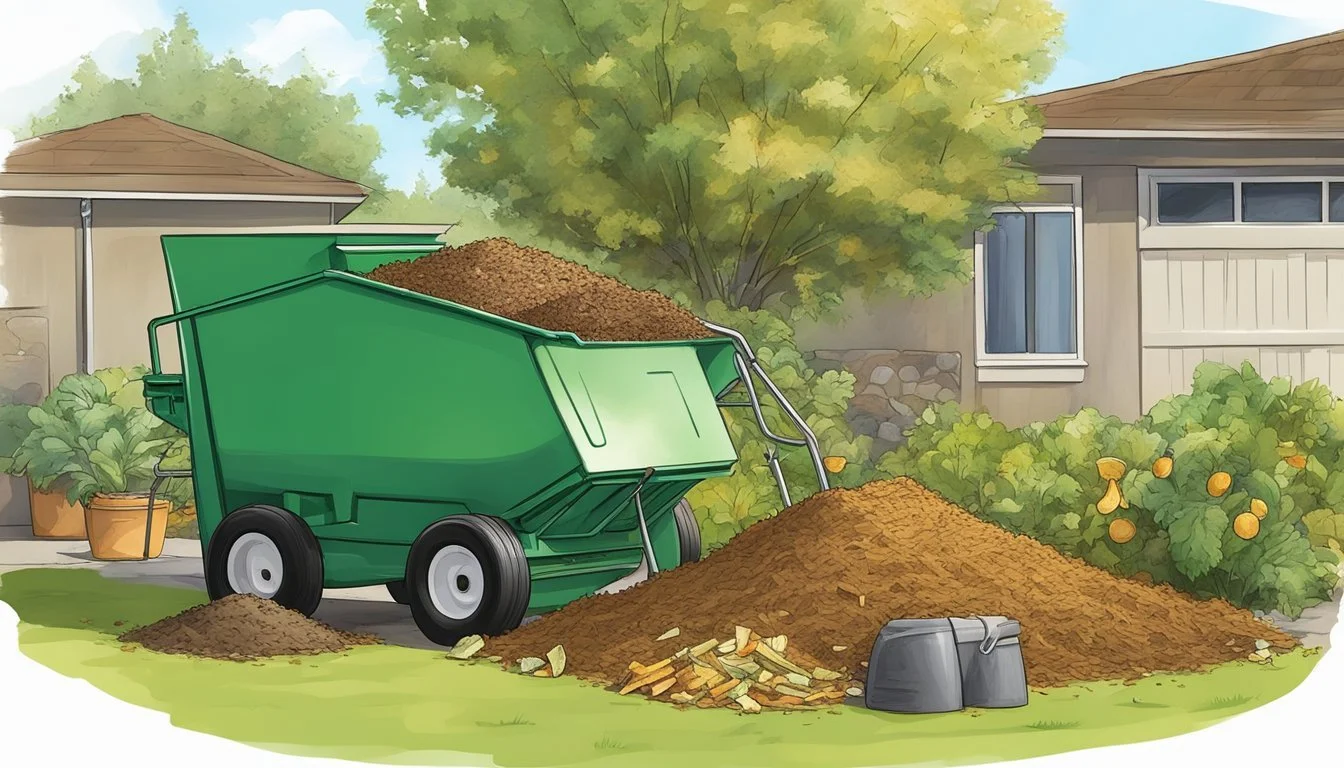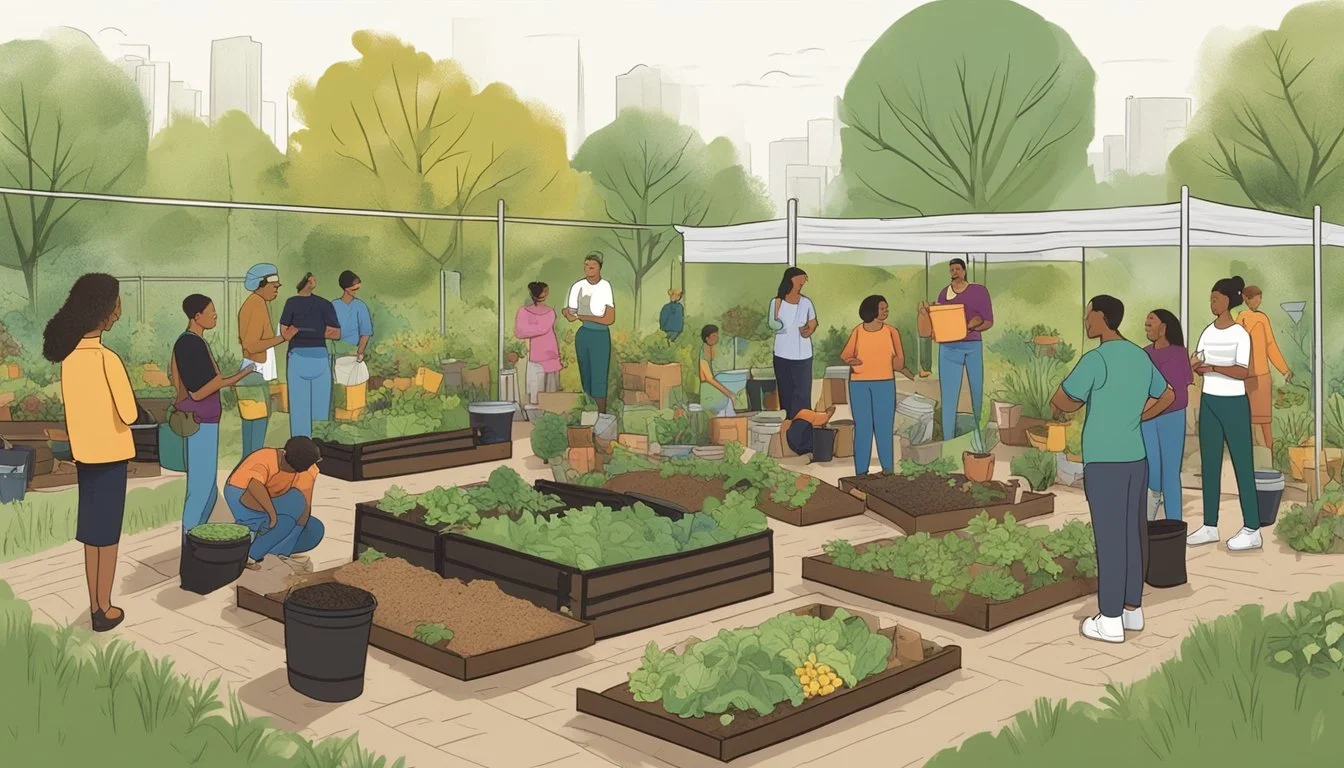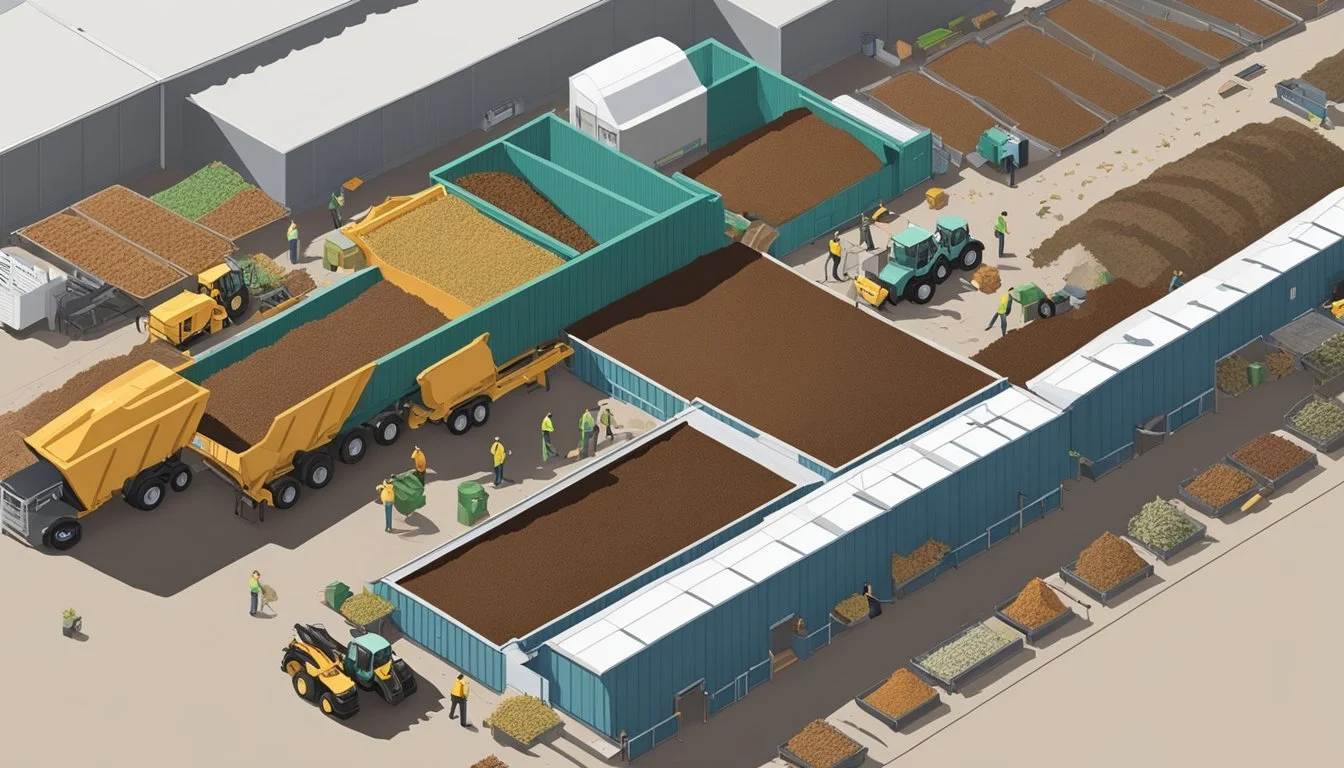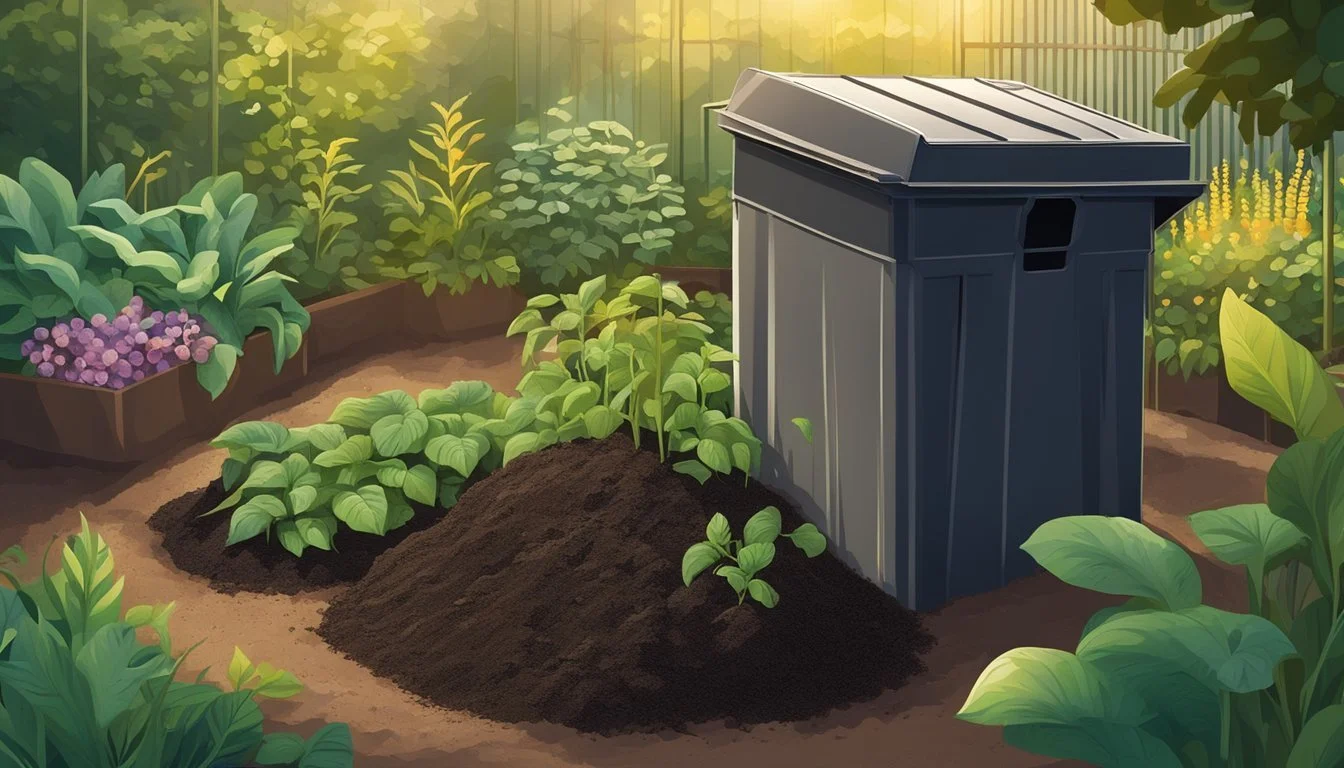Guide to Composting in Downey, CA
Effective Strategies for Local Residents
Composting in Downey, CA is a sustainable waste management practice that transforms organic waste into a valuable soil amendment. The process involves the controlled aerobic decomposition of organic materials, such as leaves, twigs, grass clippings, and food scraps, turning them into compost. This resulting nutrient-rich product can significantly improve soil health, support plant growth, and reduce the need for chemical fertilizers.
The City of Downey encourages residents to engage in composting as a way to reduce landfill waste and promote environmental stewardship. Information and resources on composting, provided by the city, guides community members through the process of starting and maintaining a successful compost system at home. This includes understanding the balance of nitrogen-rich green materials and carbon-rich brown materials, the role of water and air in the decomposition process, and the benefits of compost for gardens and landscapes.
Residents of Downey can utilize the city’s support and services, such as workshops or educational programs, to enhance their composting efforts. Through composting, individuals contribute to a greener city, reduce their environmental footprint, and participate in a circular economy that values waste as a resource.
Understanding Composting
Composting is an essential process for transforming organic material like food scraps and yard waste into nutrient-rich soil. It relies on the careful balance of temperature, moisture, and air within composting bins to facilitate the breakdown of materials.
The Science of Composting
Composting is a biological process where microorganisms, such as bacteria and fungi, break down organic matter in the presence of oxygen. The right mixture of nitrogen-rich material, like food scraps, and carbon-rich material, such as yard waste, is crucial. Composting bins serve as the ideal environment for this process by containing and controlling factors like temperature and moisture, which should be maintained to expedite decomposition and avoid odors. The pile should be turned regularly to ensure adequate air flow and a consistent breakdown of materials.
Nitrogen-rich materials (greens): food scraps, coffee grounds, fresh lawn clippings
Carbon-rich materials (browns): dry leaves, branches, cardboard
Benefits of Composting
Composting offers a plethora of benefits that include reducing landfill waste and lowering greenhouse gas emissions. The end result of composting is a dark, crumbly substance that enriches the soil and promotes healthier plant growth.
Soil conditioner: Improves soil structure, texture, and aeration
Nutrient-rich: Adds essential nutrients back into the soil
Waste reduction: Decreases the volume of waste sent to landfills
This eco-friendly practice not only recycles kitchen and garden waste but also supports a sustainable approach to gardening and waste management.
Composting Methods
Composting in Downey, California, offers several methods to convert organic waste into nutrient-rich soil amendments. These techniques cater to different needs and scales, from individual households to community efforts.
Backyard Composting
Backyard composting is a convenient method for homeowners to recycle their kitchen and garden waste. It requires a compost bin that can be easily constructed or purchased. The primary compostable materials include fruit and vegetable scraps, yard trimmings, and leaves. For effective composting, it is essential to maintain a balance between 'greens', such as food scraps that provide nitrogen, and 'browns', like dried leaves that supply carbon.
Vermicomposting
Vermicomposting utilizes red wiggler worms to break down organic matter, typically in a contained system. This method is particularly suitable for composting food waste in a smaller, indoor space. Worms consume the organic material, and their castings create a high-quality compost. Ventilation is crucial in a vermicomposting system to provide oxygen for the worms and prevent odors.
Composting in Community Gardens
Community gardens in Downey can adopt communal composting systems, where members contribute yard waste and food scraps to a shared pile or bin. This approach encourages waste reduction on a larger scale and fosters a sense of community through shared responsibility for waste management. To support these efforts, resources and guidance are available from organizations such as CalRecycle, which aids in establishing successful community composting programs.
Key Components for Successful Composting
Successful composting requires careful management of materials and conditions to facilitate the decomposition process. These elements ensure that compost turns into a nutrient-rich soil amendment.
Balancing Greens and Browns
Composting involves a delicate balance of green materials like grass clippings and coffee grounds, which are rich in nitrogen, and brown materials such as leaves and sawdust, high in carbon. A healthy compost pile should have a greens to browns ratio of about 1:3 to provide optimal nutrient balance and energy for the microorganisms that break down the waste.
Greens (Nitrogen-rich):
Grass clippings
Coffee grounds
Browns (Carbon-rich):
Sawdust
Leaves
Managing Moisture and Aeration
For microorganisms to thrive and decompose materials efficiently, the compost pile requires adequate aeration and water. The pile should be moist but not waterlogged, as too much moisture can create anaerobic conditions and unpleasant odors. Turning the compost regularly or ensuring proper airflow through a passive aeration system like a perforated pipe can help maintain the necessary oxygen levels.
Optimal moisture: akin to a wrung-out sponge
Aeration methods: turning the pile or using aeration tools
Regulating Temperature and Size
The size of the compost pile is crucial for maintaining the appropriate temperature for decomposition. A pile that is too small may not heat up effectively, while one that is too large might restrict airflow. The ideal pile size is between 3 and 5 cubic feet. Heat is a byproduct of the microbial breakdown of materials; maintaining a pile temperature between 130-150°F accelerates the process and helps to destroy weed seeds and pathogens.
Ideal compost size: 3-5 cubic feet for proper heat retention
Target temperature range: 130-150°F for optimal decomposition
By focusing on these fundamentals, residents of Downey can create successful compost systems using local guidelines provided by SB 1383 Information and Resources and Trash & Recycling services. Understanding and managing these components will lead to a rich compost ready to enhance garden and soil health.
Materials to Compost
Proper composting requires a balance of green and brown materials to ensure effective decomposition. The City of Downey supports composting efforts by providing guidelines for managing organic waste in compliance with SB 1383.
Acceptable Organic Waste
In Downey, residents can contribute a variety of organic materials to their compost bins. These include:
Food Scraps: Fruits, vegetables, coffee grounds, and tea bags (minus the staples).
Yard Trimmings: Grass clippings, leaves, and small branches.
Soiled Paper Products: Uncoated paper towels, napkins, and paper bags.
It is essential to maintain a proper balance between greens that are high in nitrogen and browns high in carbon to create a fertile compost.
Items to Exclude
There are certain items that should never be placed in compost bins in order to prevent contamination and pests. These items include:
Meat, Fish, Dairy, and Bones: These can attract rodents and release foul odors.
Grease and Oils: These substances can disrupt the composting process and attract pests.
By adhering to these guidelines, residents of Downey can effectively reduce waste and contribute to a healthier environment through composting.
Composting in Downey, CA
In Downey, California, composting is both a local priority and a necessity under statewide waste reduction mandates. Downey residents are encouraged to engage in sustainable practices as part of the broader goal to minimize organic waste.
Local Composting Regulations
Downey operates under California's Senate Bill 1383, which mandates a significant reduction of organic waste by diverting it away from landfills. To comply with this state regulation, Downey's Public Works Department provides guidelines on how to correctly separate and handle compostable materials. Residents should note that failure to adhere to these regulations could result in warnings or fines from the local enforcement agency.
Public Works and Waste Collection Services
City of Downey's Public Works facilitates waste collection and has established a partnership with Athens Services to offer weekly curbside refuse collection, which includes bins for recyclables, trash, and organic waste. They facilitate local composting efforts by providing green waste bins exclusively for yard clippings and food scraps suitable for composting. To ensure the program's success, Public Works offers resources and information to educate residents about the proper disposal and management of organic waste.
Drop-off Locations and Local Composting Sites
Residents without the space to compost at home have access to community drop-off locations and local composting sites. These sites are often in partnership with organizations like LA Compost and the Los Angeles County Public Works, where organic waste is processed on a larger scale. Information about these composting opportunities and their exact locations can be found on the City of Downey's official website or by contacting local sustainable landscaping groups that offer additional support and information.
Implementing SB 1383
Senate Bill 1383 (SB 1383) represents a significant commitment by California to reduce methane emissions by targeting organic waste in landfills. This legislation, focused on controlling short-lived climate pollutants, mandates a reduction in organic waste disposal and recovery of edible food.
Complying with State Mandates
Under SB 1383, local governments, including the City of Downey, must establish and maintain organic waste collection services. These services are critical to meeting the state mandates for a 50% reduction in organic waste disposal from 2014 levels by 2020, increasing to a 75% reduction by 2025. CalRecycle oversees these requirements and provides comprehensive guidance to ensure compliance. Cities and jurisdictions must coordinate with various stakeholders – from waste haulers to residents – to achieve these targets.
Reducing Organic Waste and Methane
SB 1383's objectives are not only to decrease the volume of solid waste entering landfills but also to mitigate methane emissions from organic waste decomposition. By prioritizing the diversion of organic waste to composting and other beneficial uses, the law aims to limit the generation of methane, a potent greenhouse gas. Californians are encouraged to participate actively in composting and organic waste recycling, empowering communities to have a direct impact on reducing environmental pollution and fostering a sustainable future.
Compost Utilization
Compost usage harnesses organic refuse to enhance soil quality and promote healthy plant growth, diverting waste from landfills and closing the nutrient loop.
Use in Landscaping
Compost is integral in landscaping to maintain the vitality of parks and community gardens in Downey, CA. As a soil amendment, it enriches the soil, helping to sustain healthy lawns and robust plant life. The process involves incorporating finished compost into flower beds and under trees, supporting a thriving ecosystem.
Contribution to Agriculture
In the sector of agriculture, compost is a game-changer. It provides a stable form of nutrients to crops, laying the groundwork for higher yield and sustainable farming practices. Its usage spreads beyond traditional farming methods, benefiting vineyards and orchards across the state. The application involves the strategic use of compost to bolster soil fertility without relying on chemical fertilizers.
Soil Amendment Benefits
Using compost as a soil amendment brings multiple advantages. Not only does it improve soil structure, but it also enhances water retention and aeration, crucial for healthy root development. Compost, which includes decomposed vegetable scraps, plays a key role by delivering essential nutrients that plants require for growth. The practice of backyard composting is gaining traction, allowing residents to create their own nutrient-rich compost and apply it effectively to personal gardens.
Compost Maintenance and Troubleshooting
Effective composting in Downey, CA, requires regular maintenance and the ability to troubleshoot common issues that may arise. This includes managing odors and pests, as well as maintaining the right conditions within your compost pile.
Managing Odors and Pests
Odors are often a sign of imbalance in your compost pile. A healthy compost should have a pleasant, earthy smell. If it emits a foul odor, this could be due to excess moisture or lack of aeration, which leads to anaerobic conditions. To rectify this, one can add brown material like shredded paper or leaves to absorb excess moisture and turn the pile to introduce air.
Pests, such as rodents and insects, are attracted to food waste in compost bins. To deter these pests, ensure that your compost bin has a secure lid and avoid adding meat, dairy, and oily foods to your pile. If pests are persistent, consider a compost bin design that is pest-resistant or using maintenance services that provide pest control measures for compost systems.
Maintaining the Right Compost Conditions
A balanced compost pile should maintain a temperature between 140°F to 160°F, which aids in the breakdown of organic matter and the destruction of harmful pathogens. Use a compost thermometer to monitor the temperature, ensuring that it is not too hot, which can kill beneficial microbes. If the pile is cold, turning it or adding green materials can help reignite the composting process.
Moisture and aeration are crucial factors for microbial activity. Your pile should be as wet as a wrung-out sponge; if it's too dry, add water, and if it's too wet, add more dry, brown materials. Regularly turn the pile to integrate air and redistribute moisture, which facilitates decomposition and prevents an anaerobic environment. This maintenance also ensures a healthy compost and accelerates the composting process.
Community Involvement and Education
In Downey, CA, community involvement and educational outreach form the cornerstone of successful composting initiatives. These efforts are focused on increasing participation in local programs and providing residents with access to necessary composting resources.
Participation in Local Initiatives
The city of Downey has implemented a composting program that actively encourages residents to contribute to community gardens. They organize surveys to gauge interest and pinpoint areas for improvement, ensuring that the vision to grow the program aligns with community needs. These gardens not only provide a space for composting but also offer a platform for hands-on education in sustainable practices.
Engagement Opportunities:
Volunteering at local composting sites
Attending workshops and training sessions
Access to Composting Resources
Education is crucial to the success of composting efforts. Downey's resources help residents understand the benefits and methods of composting. Through the city's official SB 1383 Information and Resources, individuals are guided on how to effectively reduce organic waste, supporting the broader goal of sustainability.
Available Resources:
Online guides: Step-by-step composting instructions
Workshops: Educational sessions on composting best practices
By leveraging local initiatives and educational tools, Downey aims to bolster community involvement and ensure the long-term success of its composting efforts.
Economic and Environmental Impact
Key economic and environmental considerations are central to effective composting strategies in Downey, CA. Addressing both immediate and long-term impacts on municipal finances and ecological well-being, composting emerges as a pivotal activity with tangible benefits and costs.
Cost-Benefit Analysis
The introduction of composting programs in Downey, CA, fundamentally alters the economic landscape of waste management. Initial costs are associated with setting up infrastructure such as collection systems, educational campaigns, and processing facilities. However, these costs are often mitigated by long-term savings in landfills capacity and extended landfill lifespans, which reflects a reduced need for new landfill development—a costly venture for any municipality.
Savings: Reduced landfill use decreases municipal waste management expenses.
Revenue: Sale of high-quality compost can generate additional revenue streams.
Impact on Local and Global Environment
Composting directly contributes to the reduction of greenhouse gas emissions, notably methane, by diverting organic waste from landfills where it would decompose anaerobically. Such actions by Californians effectively address the larger narrative of global warming mitigation. Concurrently, on a local scale, compost improves soil health, fostering a positive cycle of environmental benefits, from bolstering plant growth to enhancing water retention in landscapes.
Waste Reduction: Minimizes waste generation, curtailing the strain on local landfills.
Soil Enhancement: Transforms organic waste into a nutrient-rich amendment for soil, aiding Californian agriculture and gardening.
Composting not only aligns with broader environmental goals but also demonstrates economic prudence for the residents and businesses in Downey. With thoughtful implementation, composting is positioned as a dual-purpose solution to contemporary waste and environmental challenges.
Advanced Topics in Composting
In the city of Downey, CA, advancements in composting technology and its impact on climate change are of growing importance as waste management strategies evolve.
Innovations in Composting Technology
In California, companies like Recology and Athens Services are pioneering innovations in composting technology. These utilities have introduced smart composting bins capable of sorting organic waste more efficiently. Downey residents now benefit from these advancements, as the technology helps streamline the recology process, making it simpler for individuals and businesses to contribute to waste diversion goals. At the same time, Athens Services, a prominent waste hauler, employs in-vessel composting systems that accelerate the composting process, thus reducing the time it takes for waste to transform into nutrient-rich soil amendments.
Impact of Composting on Climate Change
Composting has a significant effect on mitigating climate change. By diverting organic waste from landfills, cities like Downey, San Francisco, and Costa Mesa reduce the production of methane—a potent greenhouse gas. The statewide effort, influenced by legislation like SB 1383, targets the reduction of short-lived climate pollutants, including methane. Through the adoption of composting, these cities are actively taking measures to combat global warming. Moreover, converting organic waste into compost returns carbon to the soil, which supports California's agriculture and helps sustain a circular economy focused on resource recovery.











